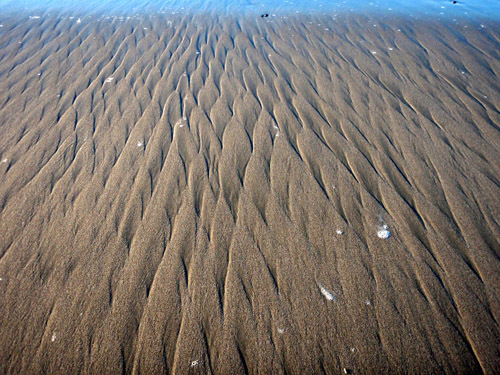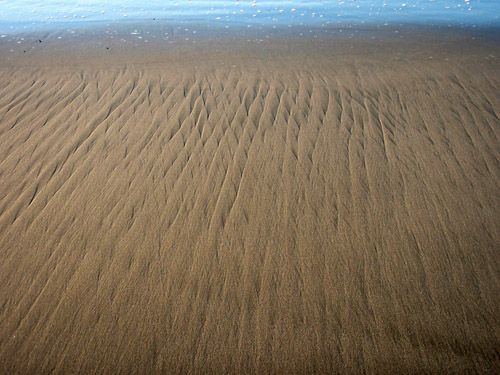
Foam Studies 1
Sand Patterns 1
Fog Studies 2
A Trip to the Foundry
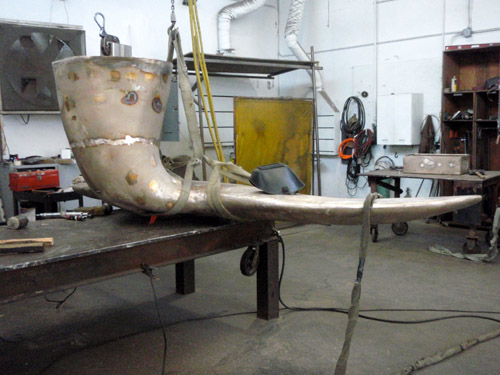
cast bronze sections of our Fluke sculpture are welded together over a steel armature
We paid a visit to Berkeley’s Artworks Foundry to inspect our Fluke sculpture as it nears completion. The foundry is doing an exquisite job fabricating the sculpture, which they will also install in Santa Cruz after the footing is poured and cured this December. Fluke was cast in eight individual sections that the foundry welded back together around a stainless steel armature for added strength. The welds are then ground and textured to make a seamless surface to match our original positive form. Satisfied with the final shape, we spent some time discussing the patina, and decided to go with a deep, dark blueish tone with lighter veins and greenish highlights on the bumps and barnacles. I’ll be excited to see the foundry’s patina samples soon!
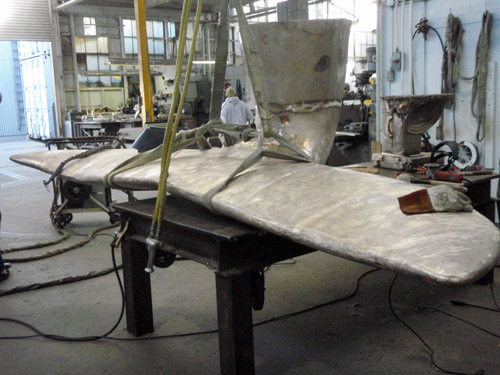
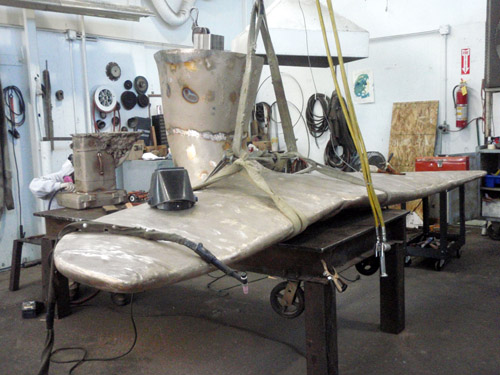
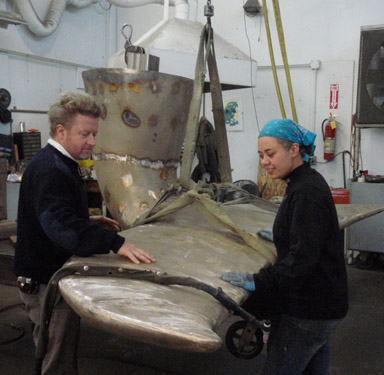
Scott and Aya discuss the patina
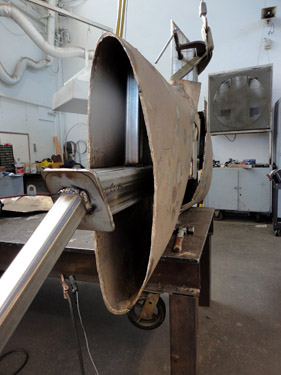
hollow bronze sections are attached to a stainless steel, structural core (photo by Artworks Foundy)
Flotsam of the Day
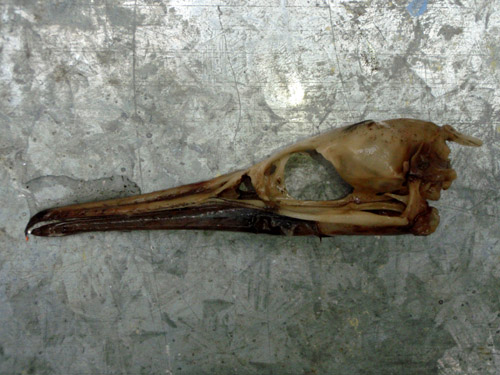
short-tailed albatross skull, found at Doran Beach
One of the delights of daily beach-combing is how the tides always seem to churn up something new to suit the mood, especially after a storm surge. The other day I discovered the decomposing carcass of a large sea bird I did not recognize. I removed the skull and took it home, macerated it in water, and after scrubbing it clean with a toothbrush was able to identify it as an short-tailed albatross, a species I did not know migrated over Bodega Bay. I’ve been thinking a lot about migratory birds as I sculpt a large whooping crane for our Tsuru Project, and this latest discovery reminded me how vulnerable these creatures can be to the perils of migration.
I’m adding the skull to my Tsuru-related research archive, a visual database I’m building of forms and images relating to my crane sculpture. As the global population of whooping cranes hovers at around 250, it’s difficult to see them first hand, so my sculpture will be a hybridized interpretation of cranes and their metaphoric associations. One of my favorite references is a book called Cranes of the World I found recently at an antiquarian bookstore. Published by Winchester Press, the book was written by the dentist and amateur birdwatcher Lawrence Walkinshaw in 1973, when the population of whooping cranes was thought to be around 50. The book is chock full of Mr Walkinshaw’s photographs from his travels around the world on birding vacations with his family.
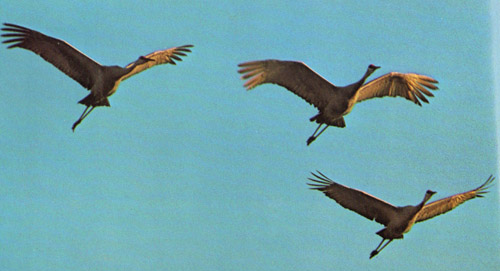
sandhill cranes, photo by Lawrence Walkinshaw (Cranes of the World, 1973)
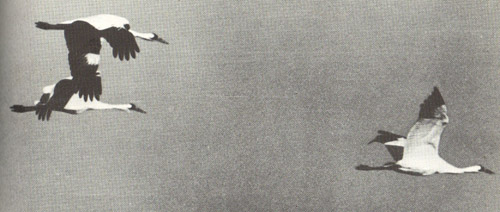
whooping cranes, photo by Lawrence Walkinshaw (Cranes of the World, 1973)
Tsuru Update: Sculpting the Basswood Crane

The crane, roughed-out in layers of basswood, almost ready for shaping
I’ve been laminating layers of basswood to shape into a large crane sculpture, to be cast in bronze as the feature of our Tsuru Project in Denver. With a specific gravity of 0.32 and non-directional, knot-free grain, the wood is lightweight, stable, and carves easily, making it the perfect material to shape into a stylized bird at this scale. Of equal significance to me, basswood comes from the linden tree, a species that thrives in regions where crane historically migrate.
I always like to find congruence between the forms I make and their material origin, however oblique or obscure. Since pre-Christian times, the tree was thought to have divine, healing powers throughout Northern European cultures, and its wood has since been carved and painted into panels and alters for religious iconography. In late spring, the linden tree produces a blossom that famously attracts honeybees, who make a distinctive monofloral honey with the nectar. The tree has always been associated with love, and is the subject of countless romantic poems:
Under the Tilia Tree
On the open field,
where we two had our bed,
you still can see
lovely both
broken flowers and grass.
On the edge of the woods in a vale,
tandaradei,
sweetly sang the nightingale.
Walther von der Vogelweide (c. 1170–c. 1230)

